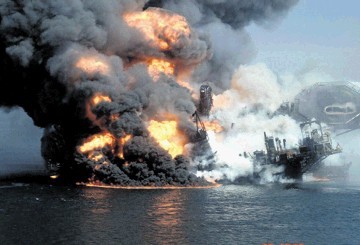
A chemical used to help clean-up BP’s oil spill off the Gulf of Mexico may not have helped get rid of the slick caused by the 2010 incident.
A study found half of the oil could still be on the sea floor even after a chemical dispersant called Corexit 9500 was applied in a bid to dissipate the oil.
It was also used to try and help aid natural microbes in the water to eat the oil at a quicker rate.
The findings were made by University of Georgia marine scientist Samantha Joye and her colleagues.
The affected area had appeared to be getting cleaner after the spill but it is understood scientists and government officials had not been monitoring the microbes and chemicals.
After recreating the move in a lab with the chemical, oil and water from the Gulf of Mexico, it was found it not only didn’t help the microbes but that it also hurt one essential oil-eating bug in the process.
The results from the findings have just been published in the journal Proceedings of the National Academy of Sciences.
Joye said:”The dispersants did a great job in that they got the oil off the surface.
“What you see is the dispersants didn’t ramp up biodegradation.”
It was found oil without a chemical dispersant was able to degrade “a lot faster” than the oil treated with it.
Joye said the chemical was of value in making the oil disappear from the surface of the water but it didn’t “ramp up biodegradation” below.
Almost 50,000 species of bacteria were chronicled in the Gulf of Mexico during the study.
One of the main oil-eating bugs, the marinobacters, normally multiply by up to 42% when there is a large supply of oil.
However it was found when the dispersant was applied the number of bugs did not increase.
A different bug, named colwellia, was found to have multiplied more but are not as adept at eating oil as their marinobacters counterparts.
As a result of the findings, Joye believes there could still be oil on the sea floor.
Recommended for you
